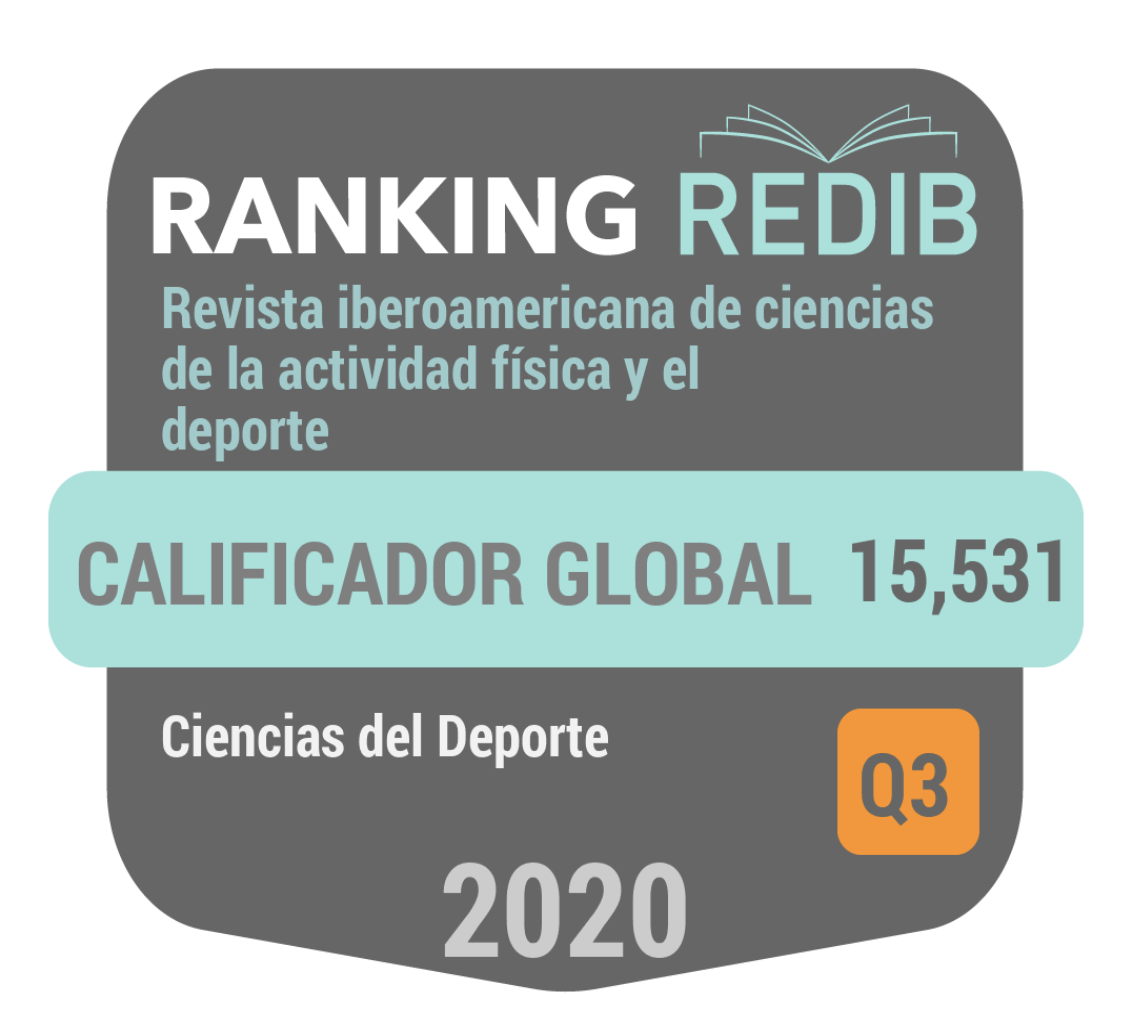Exploración biomecánica de la carrera en futbolistas profesionales colombianos: propuesta inicial
DOI:
https://doi.org/10.24310/riccafd.2020.v9i1.8301Palabras clave:
fútbol, fenómenos biomecánicos, carrera, medicina del deporte, análisis de sistemasResumen
Introducción: El fútbol es el deporte en equipo más popular alrededor del mundo, se estima que alrededor del 4% de la población mundial lo practica (1), su actividad involucra correr, patear, saltar, parar y realizar cambios de dirección en altas y medias velocidades. La biomecánica de la carrera es importante ya que permite mejorar la técnica, e impactar en la prevención de lesiones.
Objetivo: determinar las características biomecánicas de la carrera de los jugadores de un equipo de fútbol profesional.
Métodos: estudio observacional descriptivo tipo serie de casos de la carrera en 12 jugadores de fútbol profesional. Se incluyeron jugadores de 18 a 35 años pertenecientes al equipo sin lesiones de rodilla, cadera o tobillo en las últimas 4 semanas.
Resultados: La mediana de la velocidad fue 7.44 m/s [RIQ: 6,93 – 7,75 m/s] siendo mayor en la pierna derecha 7.49 m/s [RIQ 6,88 – 7,74 m/s] que en la izquierda. La mediana de la longitud de zancada, fue 3,21 m (RIQ 3,05-3,64 m) con predominancia en la pierna derecha 3.20 m [RIQ 3,11-3,74 m]. Se evidenció que el jugador de la posición volante fue quien mayor velocidad presentó, mientras que el volante derecho fue quien presentó la menor velocidad del grupo evaluado.
Conclusión: El estudio biomecánico de los futbolistas profesionales permite una caracterización del gesto deportivo de la carrera, permitiendo una visión diferente a las actualmente utilizadas tanto para la mejora en el rendimiento y estrategias de entrenamiento, como en la posible intervención en la prevención de lesiones.
Descargas
Métricas
Citas
Daneshjoo A MA, Rahnama N, Yusof A. The effects of injury prevention warm-up programmes on knee strngth in male soccer players. Biology of Sport. 2013;30(4):281-8. eng.
Ibrahim A, Murrell GA, Knapman P. Adductor strain and hip range of movement in male professional soccer players. J Orthop Surg (Hong Kong). 2007 Apr;15(1):46-9. PubMed PMID: 17429117. eng.
Andrzejewski M, Chmura J, Pluta B, Kasprzak A. Analysis of motor activities of professional soccer players. J Strength Cond Res. 2012 Jun;26(6):1481-8. PubMed PMID: 22614138. eng.
(IFAB) TiFAB, FIFA. Reglas de Juego 2016/17. 2016.
Luhtanen P. Aspectos Biomecánicos del Rendimiento en el Fútbol PubliCE Standard 2004.
Mero A. Biomechanics of Sprint Running. In: P.V. Komi, Gregor. R, editors.: Journal of Sports Medicine 1992. p. 376-92.
Álvarez-Romero D. BIOMECHANICAL ASSESMENT OF SPRINT RUNNINIG. TRABAJO DE FIN DE GRADO EN CIENCIAS DE LA ACTIVIDAD FÍSICA Y DEL DEPORTE ed: Universidad de León; 2014.
VICON®. Plug-in-Gait modelling instructions. Vicon® Manual, Vicon®612 Motion Systems Oxford, UK,. 2010.
Rueda-Peláez L. Principios de Biomecánica. Apunts Medicina de L'Esport. 2006;148:39-43.
Izquierdo M. Biomecánica y bases neuromusculares de la Actividad Física y el Deporte. Buenos Aires2008. 761 p.
Mackala K. Optimisation of performance
through kinematic analysis of the
different phases of the 100 metres. New Studies in Athletics; 2007. p. 7-16.
H.C. Dörge, T. Bull Andersen, H. SØrense, Simonsen EB. Biomechanical differences in soccer kicking with the preferred and the non-preferred leg Journal of Sports Sciences; 2011. p. 293-9.
Descargas
Publicado
Cómo citar
Número
Sección
Licencia
Todos los contenidos publicados en Revista Iberoamericana de Ciencias de la Actividad Física y el Deporte están sujetos a la licencia Creative Commons Reconocimento-NoComercia-Compartirigual 4.0 cuyo texto completo puede consultar en <http://creativecommons.org/licenses/by-nc-sa/4.0>

Se pueden copiar, usar, difundir, transmitir y exponer públicamente, siempre que:
- Se cite la autoría y la fuente original de su publicación (revista, editorial y URL de la obra).
- No se usen para fines comerciales.
- Se mencione la existencia y especificaciones de esta licencia de uso.
Los derechos de autor son de dos clases: derechos morales y derechos patrimoniales. Los derechos morales son prerrogativas perpetuas, irrenunciables, intransferibles, inalienables, inembargables e imprescriptibles.
De acuerdo con la legislación de derechos de autor, Revista Iberoamericana de Ciencias de la Actividad Física y el Deporte reconoce y respeta el derecho moral de los autores/as, así como la titularidad del derecho patrimonial, el cual será cedido a la Universidad de Málaga para su difusión en acceso abierto.
Los derechos patrimoniales, se refieren a los beneficios que se obtienen por el uso o divulgación de las obras. Revista Iberoamericana de Ciencias de la Actividad Física y el Deporte se publica en open access y queda autorizada en exclusiva para realizar u autorizar por cualquier medio el uso, distribución, divulgación, reproducción, adaptación, traducción o transformación de la obra.
Es responsabilidad de los autores/as obtener los permisos necesarios de las imágenes que están sujetas a derechos de autor.
















9.png)
